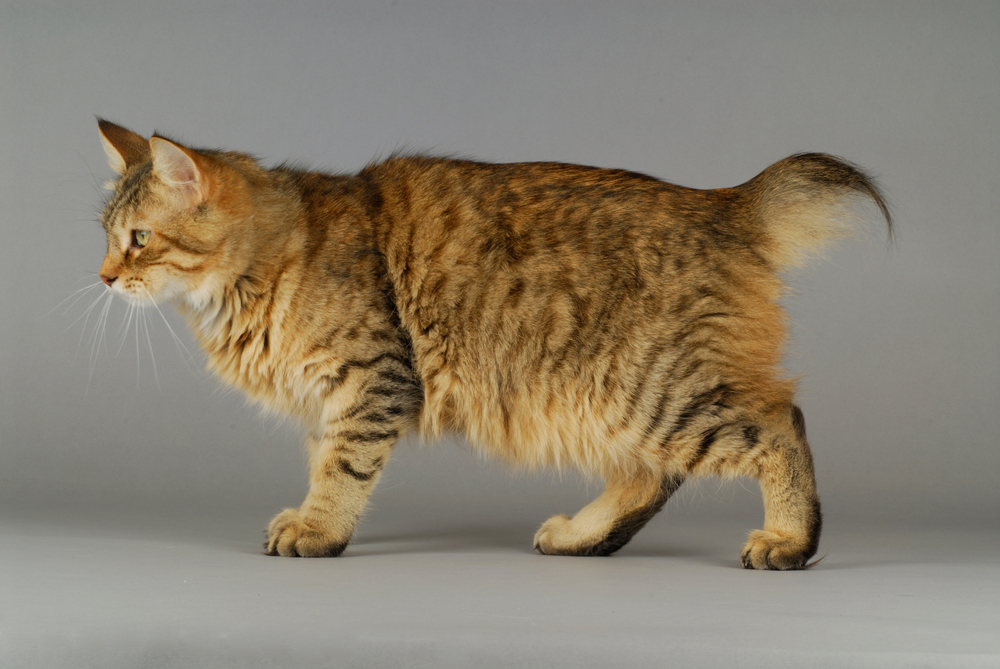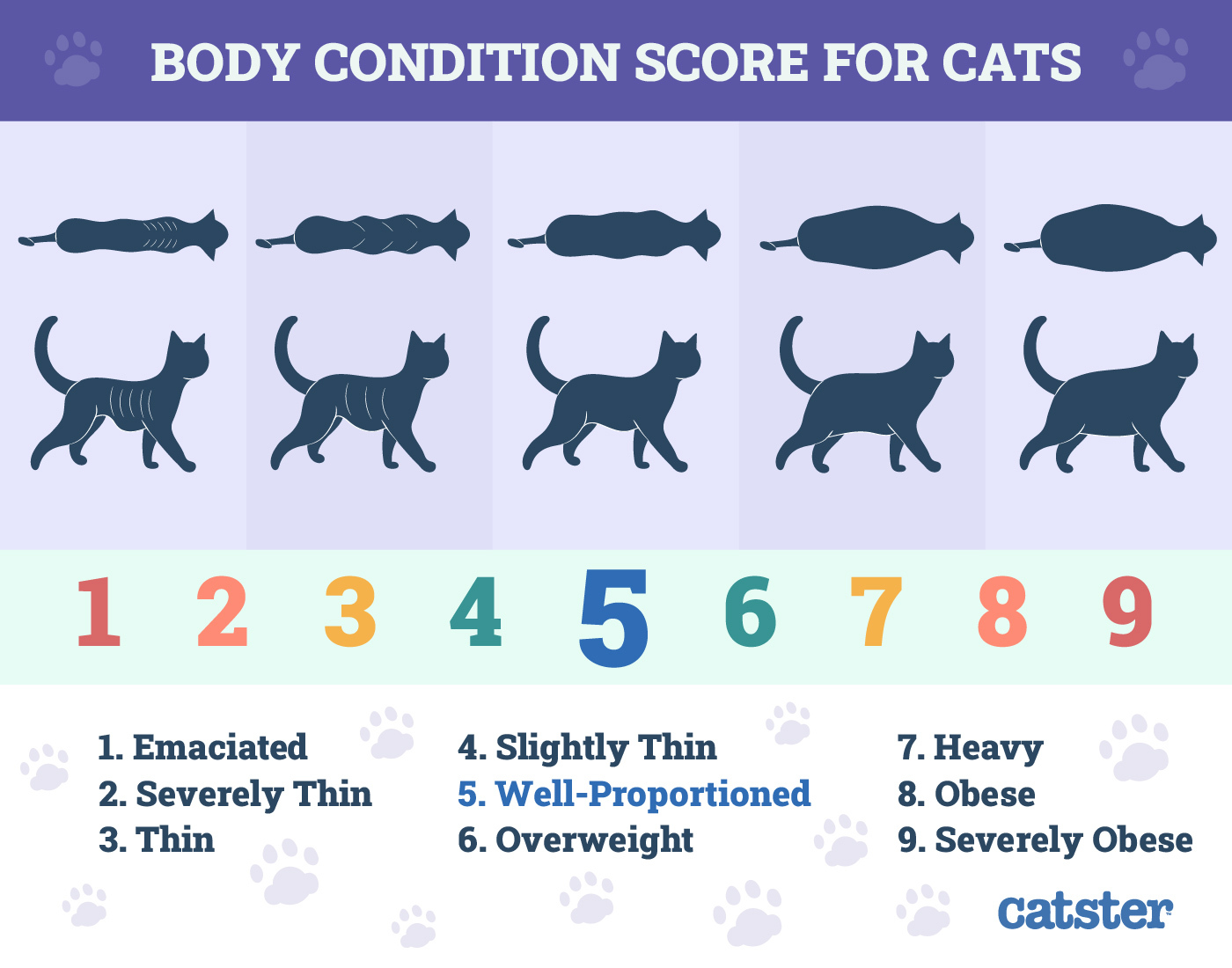You probably first noticed it when you watched your cat pacing the room. You see what appears to be a large flap of skin near their rear that swings back and forth. You immediately panic, thinking your cat is dangerously obese. What else could this explain? Rest assured; chances are your pet is not abnormal. Rather, it is a normal body trait prevalent in feline species, both domestic and wild.
The primordial pouch may look strange because it is absent in dogs. Moreover, we associate a healthy weight with a sleek appearance. The primordial pouch is irregular. After all, you probably want to avoid excess belly fat on yourself, let alone see it on your pet. Despite being normal, when a large primordial pouch too big?


The Probable Purposes of the Primordial Pouch
Our cats are more in touch with their wild side than dogs. They even resemble their ancestor, the African wild cat (Lybian wild cat). Understanding the purpose of the primordial pouch involves considering how it benefited wild cats. There are three possible theories.
One possible explanation is food storage. Cats are not as successful at hunting as you might think. Black-footed cats (Felis nigripes) are the best cats at 60%. With speed on their side, the Cheetahs take home food on 58% of their attempts. Your kitten comes in at a measly 32%. It’s logical evolution to be able to store food if you manage to catch something because it can last a long time.
Another hypothesis is that the primordial pouch helps cats run faster with more flexibility to chase prey. Some pet cats are mousers with no pressure to change their ways. Which may explain why it still exists in modern-day cats. They were built for speed, with the Guinness World Record at around 30 miles per hour for an Egyptian Mau. Being fast comes in handy for pets that still hunt rodents and other prey.
Finally, another theory provides a simpler explanation. The extra padding is, well, extra padding to protect the animal’s internal organs. Cats have many ways to avoid costly conflicts with olfactory, auditory, and visual communication. Having a primordial pouch may be part of their last-resort adaptations for survival. Its site does not impede the movement of the cat, making it a reasonable compromise.
Note that the primordial pouch is more noticeable in some breeds, such as the Pixiebob. The official breed standard also defines it. Many others do not even mention it unless it is integral to the conformation of the animal.

Bag or Fat?
We must return to this part of the question because the usefulness of the structure seems to be limited. A cat’s pouch usually begins to develop around 6 months, which is when the animal is about to reach sexual maturity. This supports a survival function for the primordial pouch in case of conflict.
But when is a primordial pouch considered fat? Your pet’s body condition will provide the answer. Your cat’s body should have a well-defined waistline when viewed from above, and the pouch just pops because the skin is loose. On the other hand, fat is hard and covers the entire body. It is not confined to the rear of the animal, giving them a rounder shape overall. This extra layer can make it difficult to feel your cat’s ribs. Their pouch will be firmer or squishy as opposed to loose and floppy.

Treatment of Obesity
Being overweight or obese carries serious health risks for cats and humans. The problems are similar, which isn’t surprising considering we share 90% of our DNA with our feline companions. These include a higher chance of developing diabetes, arthritis, and heart disease. Of course, prevention is the best solution.
However, if your kitten is overweight, you must take action to improve the animal’s health and quality of life. Drastic dietary changes are not the answer. Crash diets don’t work any better on our pets than they do on us. Lifestyle changes that gradually reduce caloric intake are the best way to manage this condition. You should monitor your cat’s intake, remove free feeding from the table. Exercise can also help.
Weight reductions can help your cat feel full even though they are eating fewer calories. Cats are obligate carnivores, which gives you an advantage with high-protein foods that meet these dietary needs. We also recommend limiting treats to no more than 10% of your pet’s caloric intake. As with their food, count or measure how much your cat is getting. A 10-pound cat needs only 200 calories daily.
You can also use treats as training aids to encourage desirable behavior. It’s all about timing and creating positive associations. We also recommend using treats interactively. Place them under toys or behind objects for them to find their rewards. It will provide valuable stimulation and mental enrichment. This mimics how they would find food in the wild, where very little goes for free.
Each pet is unique in its nutritional needs, so we recommend contacting your veterinarian for advice.
💛 😺 Talk to a Vet Online From the Comfort of Your Couch!

If you need to talk to a vet but can’t get one, go to PangoVet. This is an online service where you can talk to a vet online and get the personalized advice you need for your pet — all at an affordable price!


Final Thoughts
Your cat’s primordial pouch is a holdover from the past where it may have served several important purposes. It exists in all cats to varying degrees, even the king of the jungle. It would be hard for us to call a lion overweight, so it must have some survival value. It’s only a red flag when it’s not floppy but solid and doesn’t move. That may indicate weight gain, which you should manage immediately.
Featured Image Credit: Phrakrit Juntawong, Shutterstock


